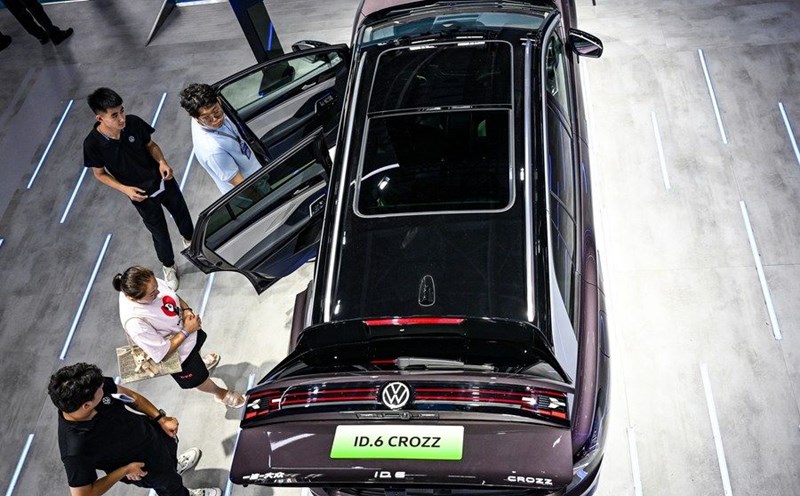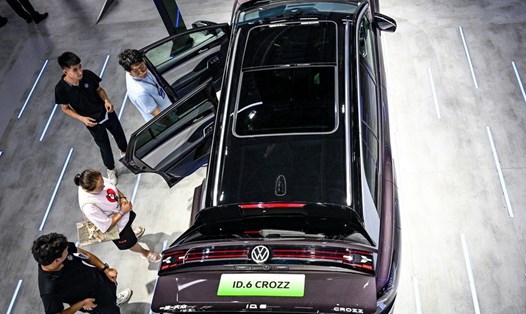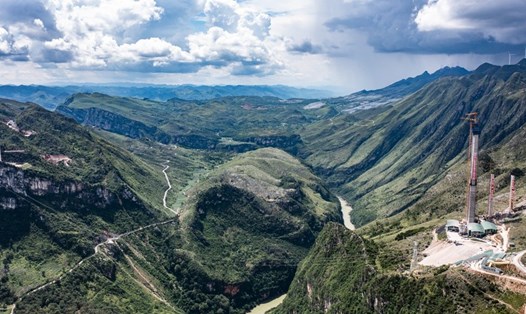The Huajiang Grand Canyon Bridge (the cape bridge of the Hoa Giang River) in Guizhou Province, China, has just reached an important milestone when the final steel girder section, weighing 215 tons, was successfully installed on January 17, 2025.
With a record height of 625 meters from the surface of the Bac Ban River, this 1.4 km long bridge is 9 times higher than the famous Golden Gate Bridge in San Francisco, USA, which is only 67 meters from the water surface.
The Huajiang Bridge is expected to open to traffic at the end of 2025, becoming the world's highest bridge.
Huajiang Bridge not only breaks world records but also promises to strongly promote regional and tourism connectivity. According to China Daily, this bridge will shorten the time to cross the canyons from 1 hour to 2 minutes, creating conditions for economic development and connecting neighboring cities such as Guyiang and An Thuan.
The project started in 2022, overcoming many challenges in the rugged terrain of Huajiang canyons. The main structure of the bridge includes 93 steel girder sections, with a total weight of up to 22,000 tons, equivalent to the weight of the 2 Eiffel Towers. The total construction cost was 280 million USD.
Currently, the title of the world's tallest bridge belongs to Bac Ban Giang bridge, also located in Guizhou province, about 320 km north of Huajiang bridge. With a height of 565 meters, Bac Ban Giang Bridge has held this record since its completion in 2016.
According to Mr. Tran Kien Loi, Deputy Director of the Department of Transport of Quy Chau province, the bridge will be an important bridge to promote regional economic integration. However, this project also faces great difficulties due to highland terrain conditions, temperature differences between day and night, and continuous strong winds in the canyons.
Currently, 80% of the project has been completed, and the next phase will install connection panels between the steel beams. This work will be implemented after the Lunar New Year, with the goal of completion and use in the second half of 2025.










